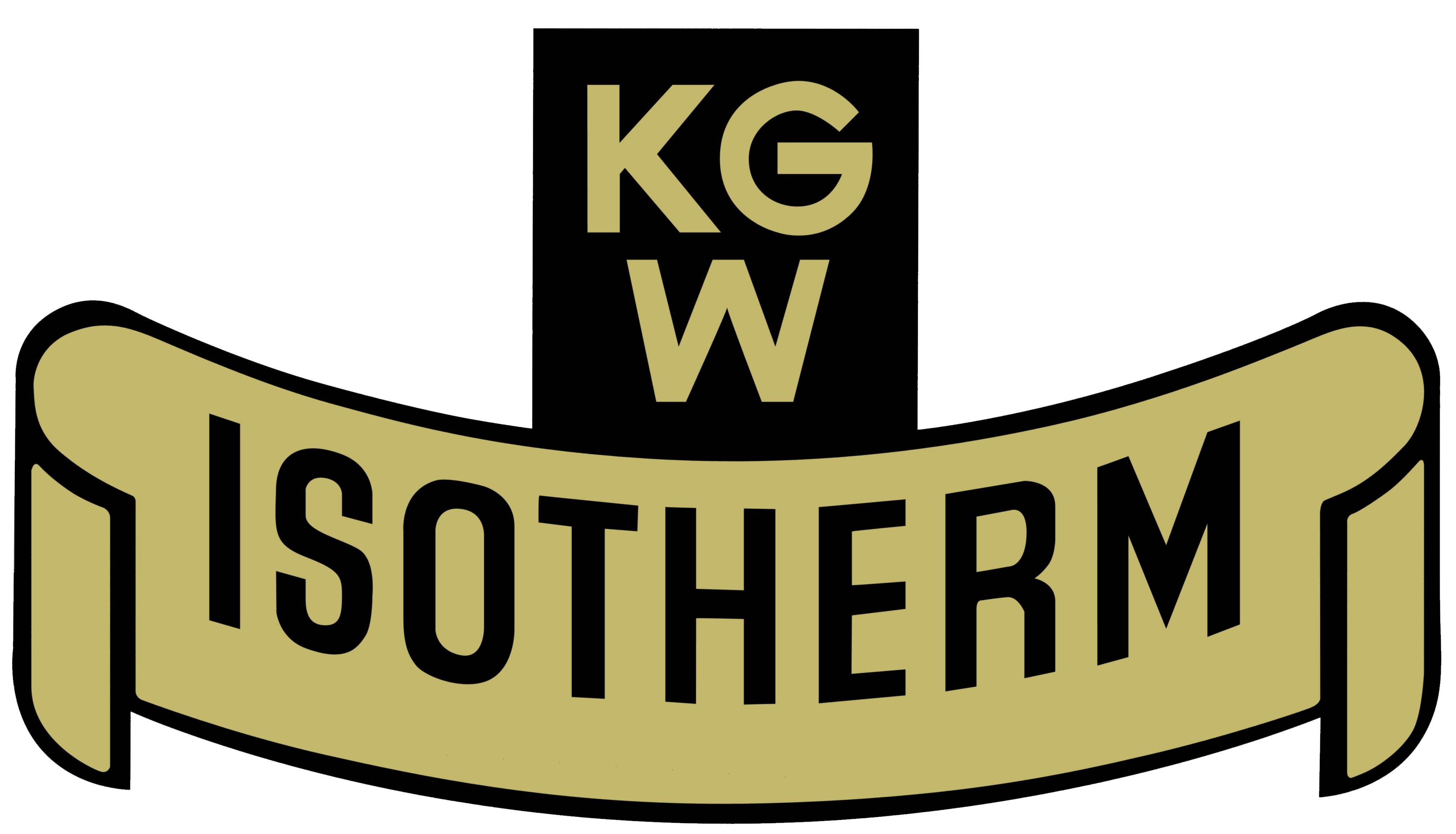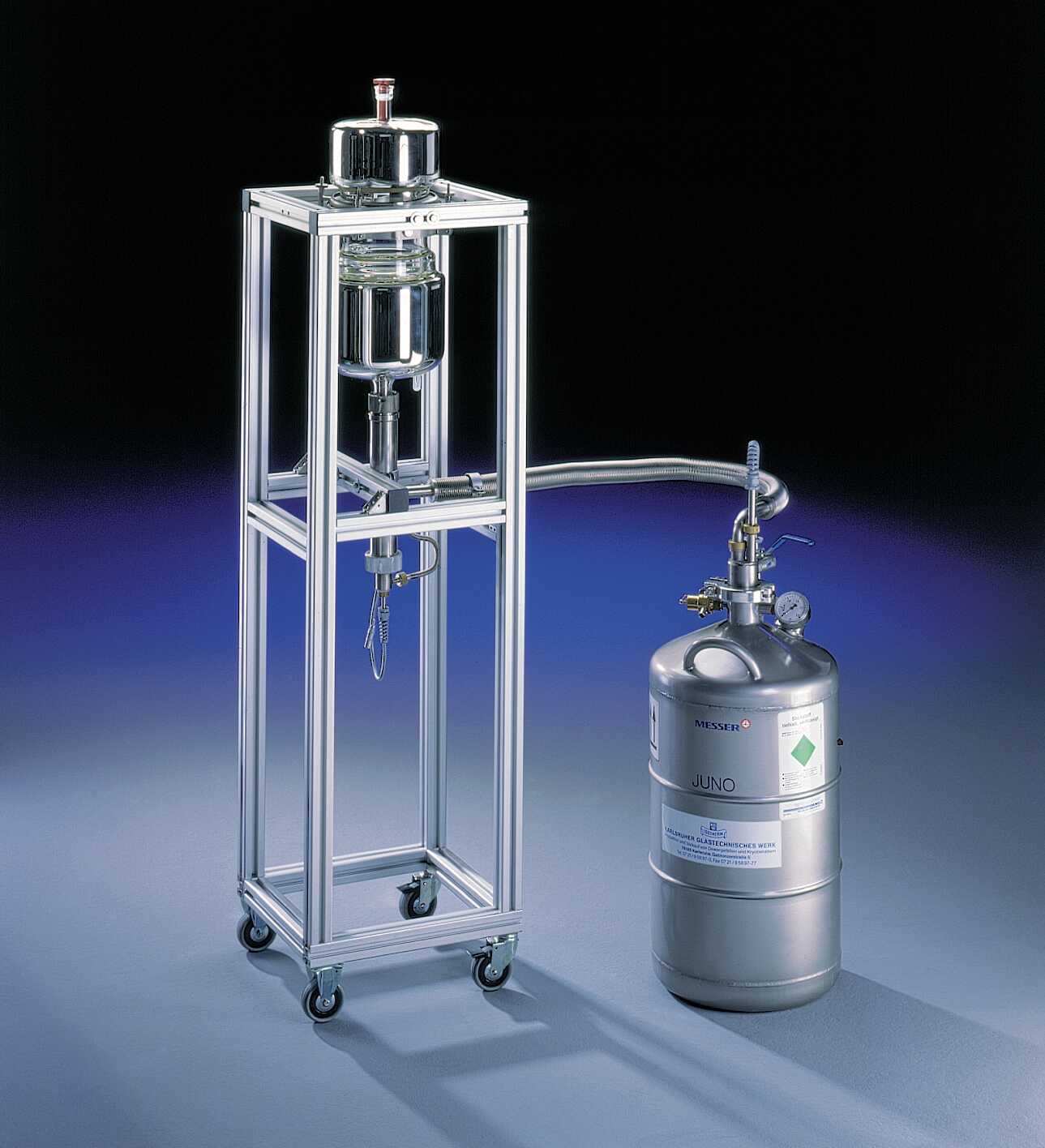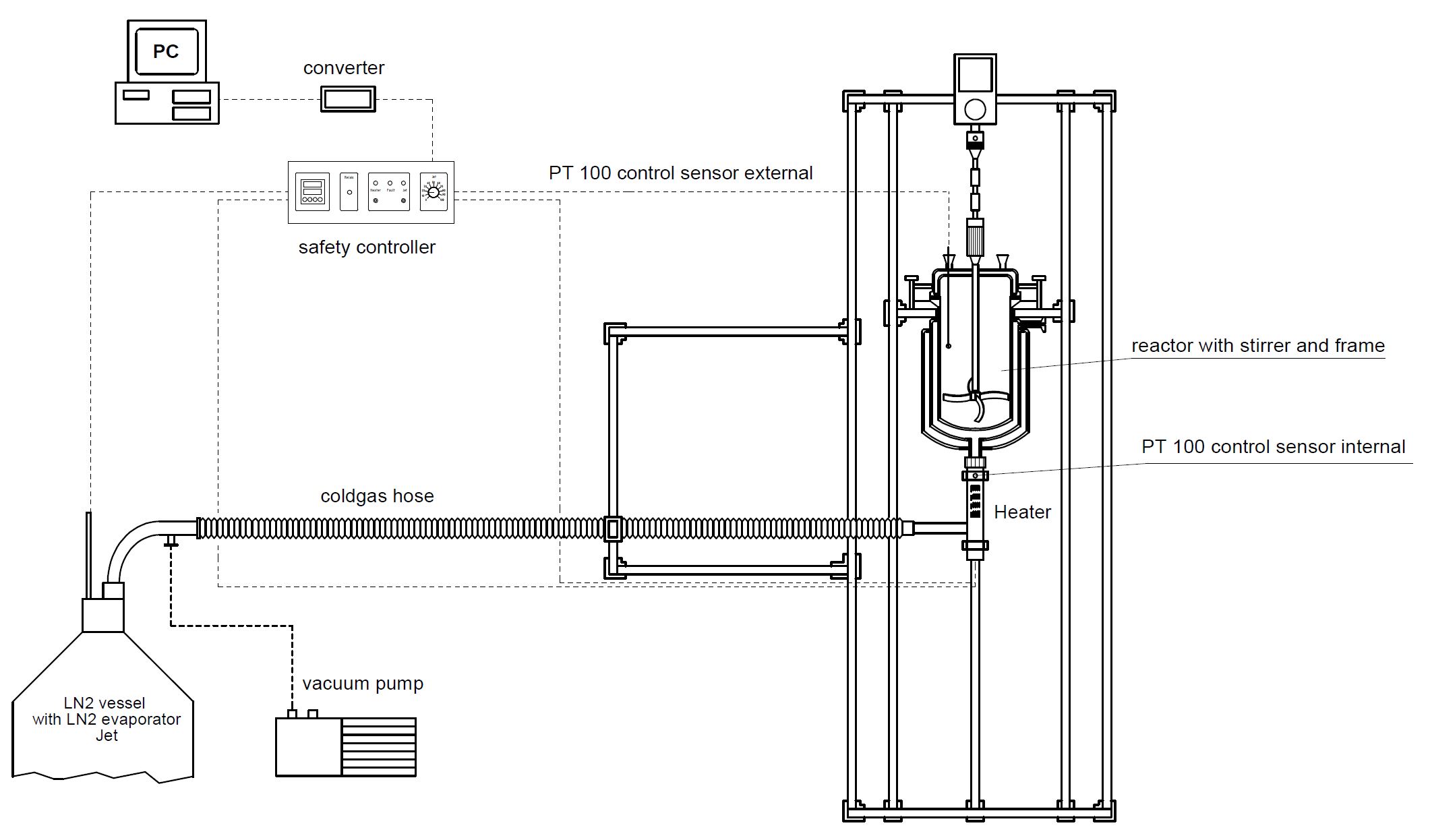Cryogenic cooling Type TG-RID for reaction vessels from +100°C (+212°F) to -180°C (-292°F)
Indirect cryogenic cooling for reaction vessels from +100°C (+212°F) to -180°C (-292°F)
To obtain rapid cooling speeds and very low temperatures, sometimes you have to switch from conventional mechanical cooling to cryogenic cooling. With this scenario in mind, KGW-ISOTHERM has developed a new KALTGAS system. In it, the reactor is cooled with cryogenic nitrogen gas, resulting in a high cooling speed. This cooling technology has low entry barriers thanks to its ease of use and high operational safety.
In addition to their high cooling speed and good control stability, another advantage of KALTGAS systems is their modular design. By swapping out individual modules such as the N2 gas line, the LN2 vaporizer (Jet) or the heater, it is possible to change the cooling speed, LN2 consumption as well as the application. The basic modules, including the LN2 container, the vacuum pump and the safety control unit, remain unchanged.
Another advantage lies in the cooling agent itself. Since liquid nitrogen gas is inert, reaction vessels can be switched without the usual problems associated with the thermostat oil. Furthermore, cleaning the reaction vessel is limited to the vessel's reaction chamber and no longer entails cleaning the thermal jacket.
Technical data for:
Typ TG-RID
Jet = 500 Watt
Heater = 630Watt
Reaktor = 2 liters volume vacuum insulated with control window
Deckel = 3 x NS 29/32 on sides and middle; vacuum jacketed
Frame = Aluminum / V2A
N2 gas line = V2A, length 1.5 meters, with vacuum pump
Standard safety control unit = Constancy +/-0,2°C
Siphon for LN2 container with KF NW 50
Best. Nr:TG-RID 63/50
Zubehör:
LN2 container with 20 to 300 liter capacityStirrer, stirring machine and dynamic stirrer seal
Further reactor and cooling system information available.Technical data subject to change


